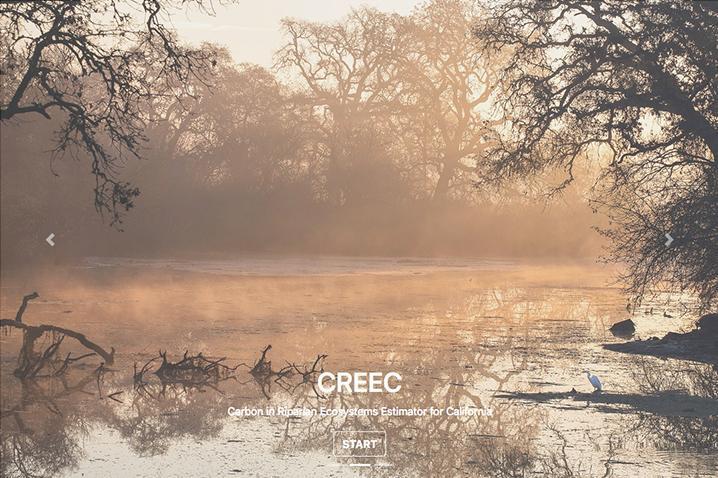New Research: An Online Carbon Calculator

Conservation scientists seeking additional sources of funding for habitat restoration have pinned some of their hopes on California's cap-and-trade system, which is charged with reducing greenhouse gas emissions statewide. Cap-and-trade has mechanisms for paying property owners who plant trees on their lands, because forests take up carbon dioxide from the atmosphere and store it, long-term, in biomass and soil. However, activating these mechanisms requires a robust estimate of how much carbon can be expected from a forest restoration effort.
ESS Associate Professor Virginia Matzek has been working on this problem for several years, with papers exploring how carbon credits could be used to pay for floodplain restoration and asking whether cap-and-trade incentives would be sufficient to induce farmers to switch to farming habitat for carbon.
Now, she and computer engineering student Pearce Ropion '19, along with colleague John Stella (SUNY-ESF), have published the details of an online tool that predicts carbon storage in riparian ecosystems. The tool can be used by project managers, prior to applying for funding from a carbon incentives program, to estimate the tons of carbon that would be sequestered in biomass and soil at various timepoints up to 100 years.
The team developed the tool as part of a $76,858 grant from the California Department of Conservation. The Carbon in Riparian Ecosystems Estimator for California (CREEC) can be viewed at this site.
The effort involved constructing a database of mostly unpublished forest inventories from riparian restoration in Northern California. Matzek used detrended correspondence analysis and agglomerative hierarchical clustering to detect vegetation structure among the plots, then fitted growth functions to the resulting vegetation communities to understand their carbon storage potential over time.
Ropion designed the web interface and the underlying algorithm for the online tool, which matches a project's intended species composition with the closest community type from the database.
Their paper showing the workflow for the development of the tool, and analyzing carbon storage in the different communities, has been published in Applied Vegetation Science.